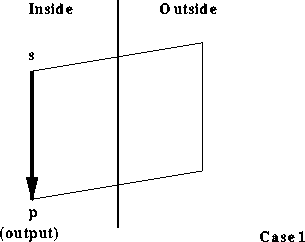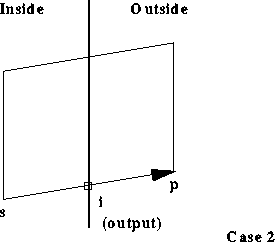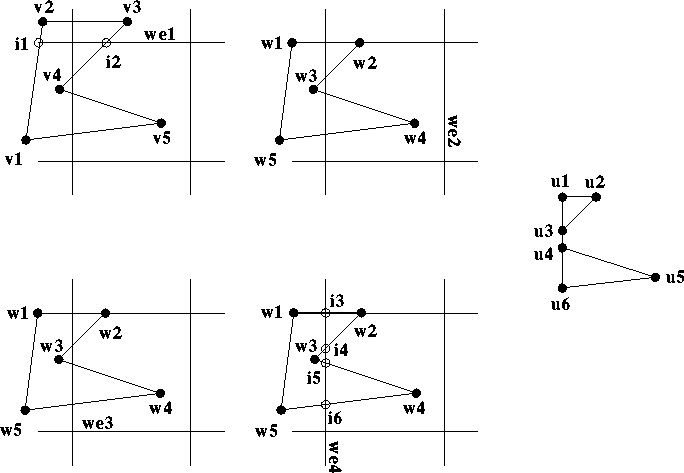- Window must be a convex polygon
- Polygon to be clipped can be convex or not
- Polygon to be clipped is given as

- Each polygon edge is a pair

- Don't forget wraparound;
 is also an edge
is also an edge
- Don't forget wraparound;
- Process all polygon edges in succession against a window edge
- Polygon in - polygon out
-

- Repeat on resulting polygon with next sequential window edge
- Line Clipping:
- Use outcodes to check all window edges before any clip
- Clip only against possibly intersecting window edges
- Deal with window edges in any order
- Deal with line segment endpoints in either order
- Polygon Clipping:
- Each window edge must be used
- Polygon edges must be handled in sequence
- Polygon edge endpoints have a given order
- Stripped-down line-segment/window-edge clip is a subtask
-
 is the polygon edge starting vertex
is the polygon edge starting vertex
-
 is the polygon edge ending vertex
is the polygon edge ending vertex
- i is a polygon-edge/window-edge intersection point
-
 is the next polygon vertex to be output
is the next polygon vertex to be output
- p is next vertex of resulting polygon
-

 \
\
- Intersection point i is next vertex of resulting polygon
-

 \
\
- No output
 \
\
- Intersection point i and p are next two vertices of resulting polygon
-

 \
\
 \
\